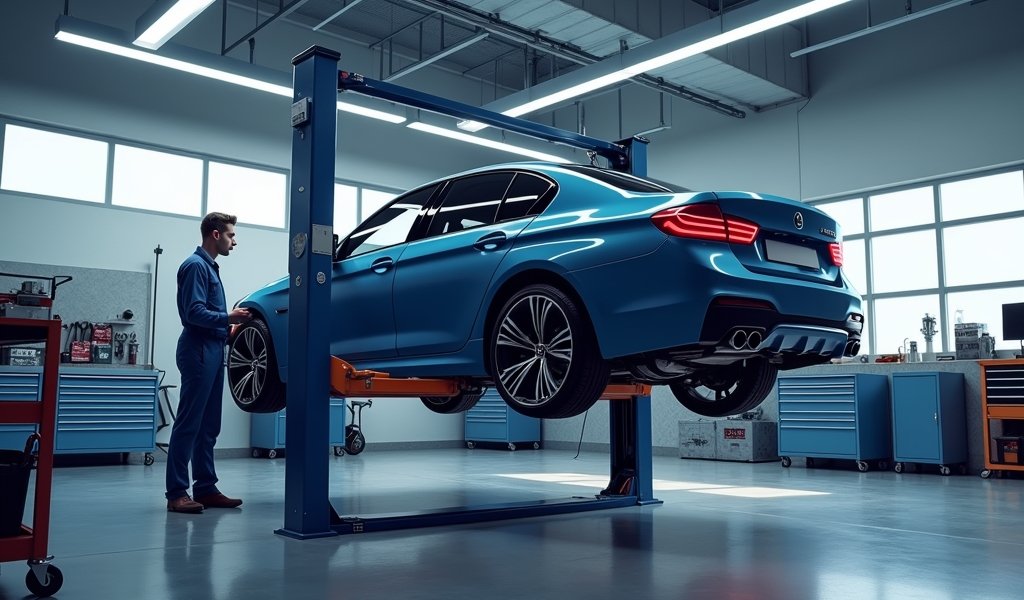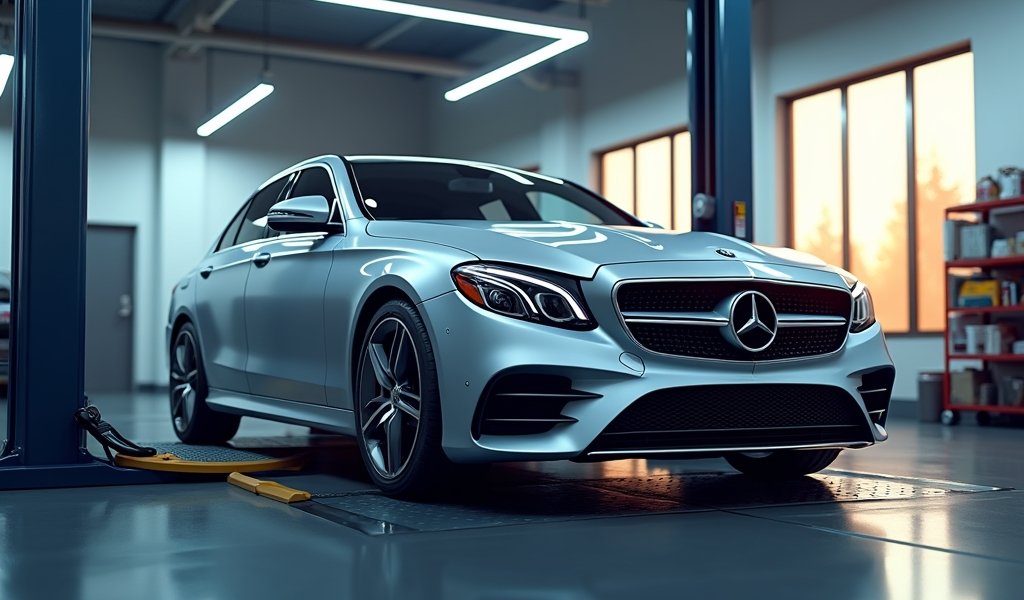Overview
This article outlines seven essential vehicle maintenance practices to prevent breakdowns and extend vehicle life, including regular fluid checks, tire maintenance, battery monitoring, brake inspections, belt/hose examinations, filter replacements, and understanding warning lights. Following these inspection habits can help drivers avoid joining the 40% of AAA’s 30 million annual roadside assistance calls that could have been prevented with proper maintenance, potentially saving thousands in repair costs while ensuring safer driving.
Table of Contents
- Introduction
- Tip 1: Regular Fluid Checks – The Lifeblood of Your Vehicle
- Tip 2: Tire Maintenance – Where the Rubber Meets the Road
- Tip 3: Battery Health Monitoring – Prevent the Most Common Breakdown Cause
- Tip 4: Brake System Inspection – When Stopping Matters Most
- Tip 5: Belt and Hose Examination – Preventing Catastrophic Failures
- Tip 6: Filter Replacement Schedule – Keep Everything Flowing Properly
- Tip 7: Warning Lights and Electrical Systems – Decoding Your Dashboard
- Conclusion
- Frequently Asked Questions
Introduction
Ever had that sinking feeling when your car suddenly conks out miles from anywhere? You’re definitely not alone. According to AAA’s vehicle reliability statistics, they respond to more than 30 million roadside assistance calls every year – and here’s the kicker – about 40% of these breakdowns could have been completely avoided with regular maintenance checks.
After 20+ years in the garage bay, I’ve seen countless preventable breakdowns that cost owners thousands in repairs and a mountain of stress. The good news? A little preventive care goes an incredibly long way.
This car service checklist isn’t just another mechanic’s lecture – it’s seven proven inspection habits that will dramatically reduce your chances of ending up stranded and help extend your vehicle’s life by years. Think of this as your roadmap to worry-free driving.
Tip 1: Regular Fluid Checks – The Lifeblood of Your Vehicle
Your car’s fluids are like its circulatory system – each one serves a critical purpose, and letting them run low or deteriorate can spell disaster for different components.
Starting with engine oil, check it monthly by parking on level ground and waiting until the engine cools down. Pull the dipstick, wipe it clean, reinsert, then check again. Fresh oil has an amber, translucent appearance – if yours is dark black or has a gritty texture between your fingers, you’re overdue for a change.
Most vehicles need oil changes every 3,000-7,500 miles, though synthetic oils can go longer. Check your owner’s manual rather than relying on the old 3,000-mile rule that many quick-lube shops still push.
For coolant checks, only inspect when the engine is completely cool – never open a hot radiator cap unless you fancy a trip to the emergency room! The coolant reservoir should show fluid between the “min” and “max” markings and typically needs changing every 30,000 miles.
Other vital fluids that need regular attention include:
- Brake fluid: Should be clear to slightly yellow and replaced every 2 years regardless of appearance
- Power steering fluid: Check monthly for proper level and clarity
- Transmission fluid: Check while engine is running and in park, should be pinkish and clear without a burnt smell
- Windshield washer fluid: Top off monthly, especially during winter and bug seasons
In my shop, I’d say about 30% of serious engine problems we see stem from owners neglecting these simple fluid checks. Five minutes under the hood monthly can save you thousands in repair bills.
Tip 2: Tire Maintenance – Where the Rubber Meets the Road

Tires are the only point of contact between your two-ton vehicle and the asphalt, making their condition absolutely critical for both safety and performance. Yet I’m constantly amazed how many drivers ignore them until failure.
Checking tire pressure should be a monthly habit, and always use a quality gauge – eyeballing it simply doesn’t work. Under-inflated tires not only reduce your fuel economy by up to 3% but also wear faster on the edges and generate excessive heat that can lead to blowouts. Over-inflation is just as bad, causing center tread wear and reduced traction in wet conditions.
For proper pressure, ignore what’s molded on the tire sidewall – that’s the maximum rating, not the recommended pressure. Instead, look for the sticker typically located on the driver’s door jamb or in the glove compartment.
Tread depth is your tire’s ability to channel away water and maintain grip. The old penny test works in a pinch – insert a penny with Lincoln’s head upside down into your tread groove. If you can see the top of his head, you’re below 2/32″ and legally bald in most states. For winter driving, you’ll want at least 6/32″ for adequate snow traction.
Rotation schedules matter more than most drivers realize. Having your tires rotated every 5,000-7,500 miles ensures even wear patterns and can extend tire life by up to 20%. This simple routine vehicle maintenance step pays for itself many times over.
Also watch for unusual wear patterns – they’re your tires trying to tell you something:
- Center wear: Over-inflation
- Edge wear: Under-inflation
- One-sided wear: Alignment issues
- Cupping or scalloped wear: Suspension problems or balance issues
Tip 3: Battery Health Monitoring – Prevent the Most Common Breakdown Cause
After 25 years turning wrenches, I can tell you without a doubt – battery failure remains the #1 cause of roadside assistance calls. The irony is it’s also one of the easiest problems to prevent with regular checks.
Modern batteries are mostly maintenance-free, but that doesn’t mean maintenance-never. Start paying attention when your battery approaches the 3-year mark. Most batteries last 3-5 years depending on climate – shorter in extreme heat or cold areas.
Watch for these warning signs that your battery is reaching the end:
- Engine cranks slowly, especially on cold mornings
- Headlights dim noticeably at idle
- Electronics acting erratically
- Battery/charging system warning light
- Swollen battery case
- Rotten egg smell (hydrogen sulfide from battery acid)
Monthly, pop the hood and check your battery terminals for corrosion – it looks like a white or blue-green powdery substance. This buildup creates resistance that can prevent proper charging. Clean terminals with a wire brush and a solution of baking soda and water, then rinse with clean water and dry thoroughly.
If you have access to a multimeter, a healthy battery should read around 12.6 volts when the engine is off, and 13.7 to 14.7 volts with the engine running. Many auto parts stores offer free battery testing if you don’t have testing equipment.
Pro tip: If you live in an extreme climate and your battery is over 3 years old, consider proactive replacement before winter or summer. It’s much cheaper and less stressful than an emergency replacement when you’re stranded.
Tip 4: Brake System Inspection – When Stopping Matters Most
Your brake system isn’t something to gamble with. As a mechanic, brake failure is among the scariest issues I encounter, yet regular inspections can prevent most brake-related accidents.
Pay close attention to these warning signals:
- Squealing or grinding noises (grinding means metal-on-metal contact – dangerous!)
- Soft, spongy, or gradually sinking brake pedal
- Vibration or pulsation when braking
- Vehicle pulling to one side during braking
- Brake warning light illumination
You can perform a basic visual inspection through most wheel spokes without removing the wheels. Look for brake pad thickness – anything less than ¼ inch means replacement is coming soon. Also check for rotor scoring or heavy rust.
For many modern vehicles with alloy wheels, this visual check is surprisingly effective. If you can’t see the pads clearly, have them checked professionally during routine service.
Check for brake fluid leaks by examining the ground under your parked vehicle and inspecting the master cylinder reservoir under the hood. The fluid should be clear to slightly amber – dark brown fluid indicates contamination and needs changing.
Speaking of brake fluid, it’s hygroscopic – meaning it absorbs moisture from the air over time, which lowers its boiling point. Even if your brakes seem fine, replace the fluid every 2-3 years to prevent fade during hard braking.
One often overlooked aspect is brake line condition. Rubber brake hoses can deteriorate from the inside out, so have them inspected annually for soft spots, cracks, or bulging. Metal brake lines, especially in rust-prone regions, should be checked for corrosion that can lead to failure.
Tip 5: Belt and Hose Examination – Preventing Catastrophic Failures
If I had a dollar for every customer who’s faced an expensive engine repair because of a $20 belt or hose failure, I could retire early. These humble rubber components are truly the unsung heroes of your engine bay – until they fail and leave you stranded.
Modern vehicles typically use a single serpentine belt that drives multiple accessories – your alternator, power steering pump, A/C compressor, and water pump. When this belt breaks, you lose multiple critical systems instantly.
With the engine off, visually inspect your belt for:
- Cracks running across or along the ribs
- Fraying or missing chunks
- Glazed, shiny appearance (indicates slippage)
- Contamination from oil or coolant (accelerates deterioration)
While factory recommendations vary, replace serpentine belts every 60,000-90,000 miles even if they look okay. The internal belt tensile cords deteriorate with age and heat cycles, making failure more likely past this mileage.
For hoses, squeeze them when the engine is cool (never when hot). They should feel firm but slightly flexible. Replace any hoses that feel excessively soft, rock hard, or show cracks, bulges, or leaks. Pay special attention to the ends where they connect, as these are common failure points.
Coolant hoses typically last about 5 years or 60,000 miles before the rubber compounds begin to deteriorate from the inside out. Even if they look fine externally, internal breakdown can cause sudden failure.
If your vehicle is approaching the 5-year/60,000-mile mark, consider proactive replacement of all coolant hoses as preventive maintenance. The labor cost to replace them all at once is far less than multiple emergency repairs.

Tip 6: Filter Replacement Schedule – Keep Everything Flowing Properly
Filters are your engine’s defense system against contaminants, and while they don’t typically cause immediate breakdowns when clogged, they significantly impact performance, efficiency, and long-term reliability.
Let’s start with the air filter – your engine’s lungs. A dirty air filter can reduce fuel economy by up to 10% and decrease acceleration. Check it every 3 months or 3,000 miles by holding it up to a bright light. If light doesn’t pass through easily, it’s time for replacement.
Most manufacturers recommend changing the air filter every 15,000-30,000 miles, but if you drive on dusty roads or in heavy pollution, you’ll need more frequent changes. This is one of the easiest and most cost-effective car maintenance tips that pays immediate dividends in performance.
The fuel filter keeps debris from reaching your fuel injectors and is typically recommended for replacement every 30,000-60,000 miles. Signs of a clogged fuel filter include hesitation during acceleration, rough idling, or difficulty starting. Some newer vehicles have lifetime fuel filters inside the tank, but I’ve rarely seen one last the actual lifetime of the vehicle.
Don’t forget the cabin air filter – it keeps the air inside your car clean and helps your HVAC system work efficiently. Replace it every 15,000-25,000 miles or annually if you have allergies or drive in dusty/polluted areas. You’ll notice improved air quality and better defroster performance.
Your oil filter should be replaced with every oil change – no exceptions. It removes contaminants from your engine oil, and once it’s full, it can no longer do its job effectively. Some modern synthetic oil can go 10,000+ miles between changes, but I still recommend filter changes at that interval.
For automatic transmissions with serviceable filters, replacement every 30,000-60,000 miles during transmission fluid services helps prevent costly transmission repairs down the road.
Tip 7: Warning Lights and Electrical Systems – Decoding Your Dashboard
Modern vehicles are essentially computers on wheels, with dozens of sensors constantly monitoring every aspect of your car’s health. When something’s amiss, your dashboard warning lights are the first alert system.
The “Check Engine” light is the most misunderstood warning. It doesn’t always mean a catastrophic issue – it could be something as simple as a loose gas cap or as serious as an impending engine failure. Either way, don’t ignore it.
Investing in an OBD-II scanner (starting around $30) lets you retrieve the specific fault codes when warning lights appear. This information helps you determine whether you need immediate professional attention or if the issue can wait until your next service.
Beyond the check engine light, these dashboard warnings should trigger immediate action:
- Oil pressure warning (red oil can): Stop driving immediately to prevent engine damage
- Temperature warning: Pull over safely and shut off the engine to prevent overheating
- Battery/charging system light: Have the system checked soon, as alternator failure can leave you stranded
- Brake system warning: Proceed with caution to the nearest safe location and have the system inspected
Monthly, do a complete exterior light check. Turn on all lights and walk around your vehicle to check for burned-out bulbs. Don’t forget turn signals, brake lights, and reverse lights – these are safety critical and can result in tickets if non-functional.
Familiarize yourself with your car’s fuse box location and diagram (usually in the owner’s manual). Many electrical issues are simply blown fuses that are easy to replace. Keep a few spare fuses in common amperage ratings in your glove box for roadside repairs.
If you notice dimming headlights, power windows operating slowly, or other electrical gremlins, have your charging system tested. These are often early warning signs of alternator issues or battery problems before complete failure occurs.
Conclusion
After 20+ years working on vehicles of all makes and models, I can tell you with absolute certainty: the difference between a car that lasts 100,000 miles and one that surpasses 250,000 miles often comes down to these seven simple inspection habits.
The beauty of this car inspection checklist is that it doesn’t require specialized mechanical knowledge or expensive tools – just attention and consistency. By spending just 15-20 minutes each month on these basic checks, you’re essentially buying insurance against those dreaded roadside breakdowns and saving thousands in avoidable repairs.
Remember that even the most reliable vehicles need regular attention. Just as we need routine medical checkups, our cars need these inspection points to catch small issues before they become major problems.
I encourage you to create a simple maintenance calendar that combines these DIY inspections with professional service at the manufacturer’s recommended intervals. Pair these owner checks with professional inspections twice yearly, and you’ll have the best of both worlds – regular monitoring plus expert eyes catching potential issues.
Your vehicle is likely one of your largest investments. Protecting that investment with these simple preventive habits is one of the smartest financial moves you can make as a car owner.
Here’s to many more miles of safe, breakdown-free driving!
Frequently Asked Questions
How often should I complete a full car inspection?
Perform basic DIY checks monthly and have a professional inspection twice yearly. These regular checks will catch most issues before they become serious problems.
What’s the most important item on a car inspection checklist?
While all systems are important, fluid levels (especially oil and coolant) are critical to check monthly. Low fluid levels can cause catastrophic damage in very short time periods.
Can I do a car inspection myself or do I need a mechanic?
You can perform basic inspections yourself using this checklist for monthly monitoring. However, supplement with professional inspections twice yearly to catch issues that require specialized tools or expertise.
How long does a proper car inspection take?
A thorough DIY inspection following this checklist takes about 15-20 minutes once you’re familiar with your vehicle. Professional inspections typically take 45-60 minutes.
What tools do I need for a basic car inspection?
At minimum, you’ll need a tire pressure gauge, flashlight, and paper towels. A multimeter for battery testing and an OBD-II scanner are also valuable but optional for basic inspections.


Pingback: Used Car Inspection Checklist: 5 Steps - knowsyourcar.com